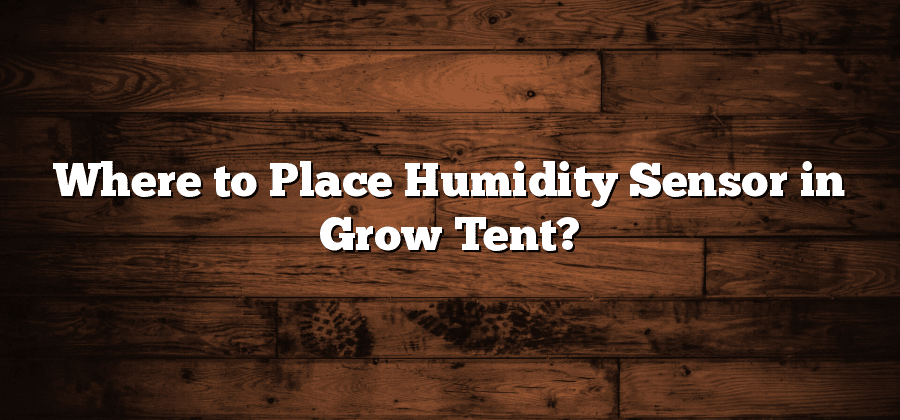Understanding the Importance of Humidity Control in Grow Tents
Maintaining optimal humidity levels is crucial in ensuring successful plant growth and maximizing yields in grow tents. Humidity control plays a vital role in creating the ideal environment for plants to thrive, as it directly influences the transpiration process. Transpiration, the loss of water from plants through the leaf surface, is essential for nutrient uptake and overall plant health.
Inadequate humidity levels can have detrimental effects on plants. Low humidity can cause excessive water loss from plants, leading to stunted growth and wilting. On the other hand, high humidity can create a breeding ground for mold, mildew, and other plant diseases. Additionally, excessive moisture in the air can interfere with pollen production and negatively impact plant reproduction. Therefore, understanding and effectively controlling humidity levels is crucial for maintaining a healthy and productive growing environment in grow tents.
Factors Influencing Humidity Levels in Grow Tents
To effectively control humidity levels in grow tents, it is crucial to understand the key factors that influence them. One of the main factors is the size of the grow tent. Smaller tents tend to have higher humidity levels due to the limited space for air circulation. On the other hand, larger tents have more air volume, which allows for better humidity control.
Another factor that affects humidity levels is the ventilation system. Properly functioning intake and exhaust fans are essential in maintaining optimal humidity. These fans help to circulate fresh air into the tent while removing stale air, thus preventing excess humidity buildup. Additionally, the quality and design of the ventilation system, including the placement of vents and ducts, play a significant role in regulating humidity levels.
Optimal Humidity Ranges for Different Stages of Plant Growth
Optimal humidity levels play a crucial role in the growth and development of plants in a grow tent. Different stages of plant growth require specific humidity ranges to ensure their healthy and successful cultivation. Understanding and maintaining these optimal humidity levels is essential for growers to achieve desired yields.
During the germination and seedling stage, the ideal humidity range lies between 60% and 70%. This higher level of humidity promotes faster and more efficient seed germination, providing the necessary moisture for the seeds to sprout and develop. As the plants progress into the vegetative stage, the optimal humidity range decreases slightly to around 50-60%. This lower humidity range helps plants to establish a robust root system and encourages leaf growth. It is important to note that excessive humidity can lead to the development of mold and fungi, which can have detrimental effects on plant health.
Identifying Key Areas for Sensor Placement in a Grow Tent
One of the key factors in maintaining optimal humidity levels in a grow tent is proper sensor placement. By strategically placing sensors in key areas, growers can ensure accurate and reliable monitoring of humidity levels. This information is crucial for making adjustments and avoiding potential issues that may arise from excessive or inadequate humidity.
When identifying the key areas for sensor placement in a grow tent, it is important to consider the factors that influence humidity levels. These factors include the size of the grow tent, the number of plants being grown, the type of lighting used, and the ventilation system in place. By understanding how these factors affect humidity, growers can determine where sensors should be placed to provide the most accurate readings. For example, sensors should be positioned away from direct sources of moisture or heat, as these can skew humidity readings and lead to improper adjustments. Additionally, sensors should be placed at different heights within the grow tent to account for the natural variations in humidity that occur within the space.
Avoiding Placement Near Direct Sources of Moisture or Heat
When setting up a grow tent, it is crucial to carefully consider the placement of sensors to accurately monitor humidity levels. One key factor to keep in mind is avoiding the placement of sensors near direct sources of moisture or heat. Placing sensors in these areas can lead to misleading readings and inaccurate humidity control.
Direct sources of moisture, such as humidifiers or misting systems, can create localized areas with high humidity levels. Placing sensors in close proximity to these moisture sources can result in the sensors constantly detecting high humidity, leading to incorrect readings. Similarly, placing sensors near heat sources, such as grow lights or heaters, can also impact accuracy. Heat sources can cause temperature fluctuations that affect humidity readings, giving an inaccurate representation of the actual humidity levels in the grow tent. Moreover, excessive heat can also alter the performance of the sensors themselves, leading to unreliable data.
To ensure accurate humidity control, it is best to place sensors in areas where they can capture an average representation of the overall humidity levels in the grow tent. Positioning sensors away from direct sources of moisture or heat will help provide more consistent and reliable readings. By doing so, growers can have a clearer understanding of the exact humidity levels within the grow tent, allowing them to implement appropriate measures to optimize plant growth and health.






